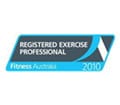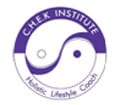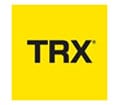Core Exercises on the foam roller
Some core exercises with a difference. Traditionally, the foam roller has been used to release tight muscles but it is also an effective way to introduce instability to take your core exercises to another level. Check out the video to see the core exercises you can do on the foam roller.
Want to do these core exercises using a Foam Roller? Purchase HERE

Here is a transcript of this video for core exercises on a foam roller
Sally: Hi, everyone. I’m here today with Cameron Corish from Core Health Coaching.
Cameron: Hi.
Sally: Hi. Now last time, Cameron showed us how to release ourselves, release our muscles and make us feel all nice and good, so we can exercise again, so that we do not feel so bad after exercise and we’re using a foam roller. Now, that’s really what foam rollers were designed to do. They were designed to help us to self-myofascial release. Since then, there are all these fantastic exercises that you can do on them as well.
The foam roller makes it a little bit more interesting, gives you more value for money when you buy a foam roller because really they are actually worth investing in. Also, a lot of these incorporate a little bit of balance, so you’re working a lot more of your core exercises. Gives you more bang for your buck in terms of your overall exercise time and it makes it more interesting. Cameron, you’re the expert.
Cameron: Take us through it. Okay, good. Yeah look, as Sally was saying, the foam roller is a great tool. We’re going to go through a couple of different series of core exercises. Predominately, they’re core based. I’ll start off with just a little bit of mobilization through your hip first. This is a really good one before the start of a session. Normally with fascial releases, we do that at the start of the session. This one is just getting the hip joint a little bit moving, also switching on the core. I might take that from you at the moment.
Sally: Sure.
Cameron: Sally, I’ll get you lying down facing up for me. We’re going to place this underneath Sally’s bottom. I’ll get you to lift the bottom up. Just pass it through there. Not right on the fleshy parts of your bottom. Just a little bit higher than that. As you can see, Sally’s hips are a little bit higher. It’s not in small of the back, but that’s in a great position. I’ll get you to lift your arms up for me Sally. Not arms, how about your legs.
Sally: Legs up?
Cameron: Even those. Lift your arms up now. No, we’ll lift your legs. With the legs there, what we’re actually doing is we’re now going to go in circles with the legs. Try and keep them at the same pace, but we’re going in opposite direction for each leg. Those who are challenged like me in regards to doing different legs at different times.
Sally: I’m going to try to kick you in the head.
Cameron: Yeah, we did that didn’t we? Yeah. You’ll notice the hips are staying nice and close on the foam roller and that the hips aren’t moving. It’s all opening up through the hips. Your lower abdominal should be working as well.
Sally: They are.
Cameron: Your feet are in the road and what we’re going to do is reverse direction as well. You don’t necessarily need to do a lot of this. It’s really just getting the hips in place and switching on that core.
Sally: It’s quite relaxing. I could do this for quite a long time, but it is subtly working you, so it is a good one to do. A lot of people have tight hips from sitting down all day if they’re doing an office job for example.
Cameron: Yeah, and getting your hip in the right position. Right, okay. As I said, that’s a great mobilization or just an opening for your hips. We talked about this tool as being something that’s really great for your core exercises as well. One of the standard core exercises, if you’ve done any sort of exercise routine before, is the plank or the hover. I’ll get Sally to demonstrate that.
You would have seen this around the place, seen it in a lot of different core exercises. This is the standard hover and you can notice Sally’s back is like a plank and that’s the whole idea there. The belly button is drawn up, so that’s nice and flat. That might be challenging enough for you as it is and that’s fine. The next progression on that is actually going onto your hands, so you’re actually loading more weight through your core muscles. That’s just a little bit tougher. What we’re actually doing with the foam roller is again, just progressing that exercise up and making it a little bit tougher. We’re going to use that on your hands to make that unstable.
We’ll go to elbows first. Lifting up from your toes, hips nice and level, so the hips aren’t sticking up. There’s no curve in that back. That belly button is through there. It doesn’t look like much of a change from the other plank that we did, but I can assure you that that just little bit of instability makes that core just shake a little bit more.
Sally: Actually, if you nod your head, it makes it shake even more.
Cameron: We’ve made up a new core exercise. Again, the progressions that we had on the planks before was that we went to hands. We’ll go up on this on the hands. Again, because it’s a fairly tough exercise and you’ve got a little bit of instability through there, that’s making Sally just work that much harder.
Sally: If you just actually move it a little bit more when you’re up here, it does make it harder again. It’s like nodding your head, only nodding your hands.
Cameron: Nodding your head. The next one is that we’re actually going to introduce a little bit more dynamic movement into that core activity. We’ll go back onto a plank onto the elbows with the foam roller. What we’re doing now is we’re actually going to move the foam roller forwards and back. A forward foam roller roll and then coming back. Again, as you’re extending out, your core has to switch on so much harder.
Sally: Yeah, that’s so much harder.
Cameron: One, it’s unstable. Two, you’re stretching out even further, adding more load, so there’s a lot of different things that are happening there. What Sally was doing, keeping that form through the gluts, the lower back, and thought the mid-back as well.
Sally: If you can’t do that now, it gives you something to work towards. It gives you something to aim towards.
Cameron: Yeah, definitely. That’s a great series of core exercises for the foam roller.
Sally: Cameron, we’ve finished with our dynamic warm up for our hips and we’ve done a few little planks, what are we going to do next?
Cameron: Well, we’re still going to use that philosophy around the planks and working the deep core muscles around your transverse abdominis is we’re actually going to change that and go to the side a little bit and we’re going to use a little bit more of your obliques as well as those core muscles. Again, we’re really using this foam roller to do that. Rather than having that unstable part through your arms, we’re going to do this through your feet. Do we want to show the side plank normally?
Sally: Yeah, okay.
Cameron: With the side plank, we start on the elbows. This is a progression by lifting up through the hands and realistically what we’re doing is thinking about the hips. Higher hips, the more that these obliques have to work through here. Make sure one shoulder is above the other shoulder through here. Then one progression through there is lifting this up nice and high. Then the next one is then lifting the leg up nice and straight through there. All the time, keeping the hips nice and high and hips right over top of each other through there.
If we come down through there the foam roller then, what this adds to the exercise, is making all of that more unstable, have to work a little bit harder to do that. We’ll just take that through there. Same as that side plank. We’ll start on the elbows. See, the body is nice and aligned through there. Arm up through there. Make sure you’re not leaning too far forward through the shoulder, so the shoulder is right on top of the other one. Nice line through this body through there. There’s no bend either at the hips or at the knees. That’s pretty good Sally.
Sally: Good.
Cameron: The next one we’ll do is, I’d like you to come down, and we’ll go to the full hand. This is fairly tough. Once you go to the full hand, a lot of pressure through the shoulders, so you need to be fairly carefully that your shoulder can take this load, as well as obviously the primary activity of this is all this core based. Again, making it unstable through the legs. Again, think about lifting the hips up nice and high and down with it.
Sally: Now, I actually don’t struggle to do that without the foam roller, but with the foam roller, it makes it a lot more difficult. It really does add a lot to it.
Cameron: It doesn’t seem like there’s a lot there, but our body has to strive for stability first and as a result, it’s going to work a lot harder to do the same exercise.
Sally: It’s good to try because you can’t really hurt yourself. You’ve only got a little way to fall. It helps develop muscle memory each time you do it a little bit, even if you only do it a millimeter more or a second more each time. It’s all about progressing.
Cameron: Yeah. Shall we show the next progression after that? We’re on the full hand. Make sure that our body is nice and aligned. That our upper body is not coming down to the ground. Turning through here.
Sally: I’ll try the full progression.
Cameron: Lifting the hand up. Lifting the leg up, sorry.
Sally: Lift the leg up, ah!
Cameron: There you go. There’s good position through there.
Sally: Again, it’s something I can do without the foam roller, but yeah with the foam roller it’s hard. Anyway, that’s good.
Cameron: It’s just a little bit of instability.
Sally: You do a lot of Swiss ball work and BOSU work in your practices, as I do in mine, so we are both big advocates of using balances to make things that little bit more challenging.
Cameron: Yeah. In the foam roller again, it’s very similar to a Swiss ball, but what happens is there’s not as much movement. It’s a good interim step up to the Swiss ball. Again, same principle; a little bit of instability there, the body has got to work harder, you get better results.
Sally: I actually think sometimes exercise with the foam roller, that you could do on a Swiss ball, are actually harder with the foam roller. Some of them are.
Cameron: Yeah.
Sally: It depends on you though.
Cameron: Okay. The next one we’ve done is just a side plank series, is that we’re working with the foam roller at the feet. We’re going to do another core exercises, which is called the jackknife and we’re going to work through this as creating that instability through the feet. This one, we’re just getting the foam roller around the mid-part of the shin. We’re going to come up into that plank position, just lifting the hips just a fraction higher. This time what we’re going to do is move the knees to the ground. Start pulling up through here. Make sure that there’s 90 degrees through here. You’re getting a nice roll through there. Whereabouts are you feeling that Sally?
Sally: I’m feeling that in the front of my abs, so my rectus abdominis and also in my transverse, my deepest layer.
Cameron: Yeah, fantastic. Just really keeping the hips nice and high.
Sally: I feel a lot of lower abs as well.
Cameron: Yeah, that’s it. It grabs a lot and again, this instability is then really using that whole core.
Sally: Actually, even just a little bit in my obliques. Really, the whole ab package.
Cameron: Yeah. Have you tried that on single leg?
Sally: I’m not sure I should have invited him. All right, here we go. This leg is up here?
Cameron: Yeah, that’s it. Just bringing the knee in. Good. Then extending out. Pointing the toes on there. Making sure the hips are nice and high. There you go. Again, that’s just one step even further. When you’re getting really good on those double legs, a great way of actually getting it tougher.
Sally: Then of course you go to one leg and one hand, don’t you? I’m not showing you that.
Cameron: I haven’t seen that, but yeah you definitely can do that.
Sally: Well, there’s something for us all to aim for.
Cameron: That’s good.
Want to do these core exercises using a Foam Roller? Purchase HERE



Sally: Okay. That’s good Cameron. Good and bad, but good. Yeah. Okay, here we are again. Now Cameron swears to me that the next ones aren’t going to be so hard.
Cameron: Did I? Really? Are you sure?
Sally: We shall see.
Cameron: Okay. Again, what we’re doing with this set of series is we’re using the foam roller as a bit of an instability device to make the exercise a little bit tougher. When you need a little bit of variety or you’ve actually got to a stage where just the normal exercises are becoming comfortable …
Sally: Too easy.
Cameron: Yeah. Nice to have isn’t it? Too easy? Again, one of the great things about an instability device, being a foam roller, Swiss ball, BOSU, is that it makes your body work a little bit harder and it’s really using those core muscles. I’ll start with Sally on the ground facing up. With this one, most people would understand what a crunch is, if not you can go into the library to have a look at a crunch, is that what we’re doing is we’re bringing this part of your upper abdominis closer to your hips. That’s really working up through there. Now again, with the foam roller all we’re doing is introducing some instability.
Make sure your head is nice and supported on the foam roller, your hips are nicely supported on the foam roller as well. Exactly the same core exercises, but the difference is, we’re actually having to engage a different set of muscles, which is your transverse abdominis to try and stabilize yourself before you can come up. All of a sudden, that’s just a lot tougher. In through here, always feelings that top part just underneath your rib cage, so it makes it a lot easier of course, but through that area there.
Sally: The transverse abdominis is the deepest layer of your abdominal muscles. A great way I’ve heard it described, it’s your five-kilo muscle. It’s like if you’re wearing control underwear; it’s wrapped right around your front and back and sucks you all in. If you’ve got a nice, tight switched on transverse abdominis, it’s like you’ve lost five kilos.
Cameron: Right. Yeah, being nice and tight around the waist is perfect. It’s like this belt that’s pulling your waist in. Great. Okay, that’s our first one using this. The next one we’re going to, while you’re in that position, is just do a little bit of balancing. Now, balancing through the core means that you have to switch on those core muscles again. I’ll get you sitting up just a fraction, leaving your feet through here. We’re supporting our body weight through our hands and through our feet with the foam roller.
The next one we’re going to do is introduce a little bit of unstableness. We’re going to take one leg off the ground and then bring that back down and we’ll do it for the opposite leg as well. Again, it doesn’t look too difficult, but when you’ve got an unstable environment, so at this point in time, you’ve got of those support mechanisms being unstable, is that that core has to hold you there.
Sally: It’s a bit like sitting on a Swiss ball and lifting one leg. It doesn’t look all that hard, but it is. It is quite difficult when you’ve never done it.
Cameron: Yeah. It is a good one as a starting. Again, a natural progression for this is then to just make it a little bit tougher. The next phase is actually lifting both legs off at the same time.
Sally: Fun too.
Cameron: You can see at this point is that we only then have three supports. Both arms and through the hips through that foam roller, so you’ve got more pressure through there and all of a sudden, Sally is starting to work.
Sally: You can see me starting to shake.
Cameron: Lucky these were easier exercises. Okay, even make it tougher. Let’s leave the legs up there. Now, one arm off. Take one arm off the ground.
Sally: Watch out or I’ll fall on you.
Cameron: No, doing well, doing well. Fantastic.
Sally: This is something people can do just because you can be trying this and you don’t think you’re working that hard and you can hear the breathiness in my voice already from me starting to puff. Now, this is something you can do at home, you’re watching the TV, you’re watching the news, you’re getting your heart rate up, you’re working your core stability. It’s exercise that doesn’t really feel like exercise and it’s a bit of a challenge. You’re tapping into one of those key motivators, which is mastery. Then one day you’ll be able to do it and you won’t wobble and you’ll be fantastic. You’ll be like, yeah I did it. Then you’ll be motivated to do something else cool and exciting.
Cameron: Some of the key points with that one, obviously we’re trying to stay as stable as we can through the hips, but you can’t do that if you’re feeling not tight through this area. Really nice and low through there. It needs to be tight. Okay? Excellent. Was that easy?
Sally: No, but it was comfortably challenging, yes.
Cameron: If you go through the progression that we’ve done, you start at a lower level, then just reduce the amount of support that you do, and it should be challenging each time that you start the new one. Eventually, with you’re talking mastery, the more repetitions that you do, the better that you get at it. Then you’ll get up to a stage where you’ve really only got one level of support there.
Sally: It’s a real Goldilocks exercise. It’s a real comfortably challenging one that you can progress I think, yeah.
Cameron: Fantastic.
Sally: Okay. All right. I’d love to see what we’re doing next and what we’re doing next is?
Cameron: We’re doing a lateral foam roller roll. Very similar. A lot of the ones that we’ve been using at the moment is working the foam roller in one particular direction. We’re actually going to go the opposite direction. Our body is actually going to go from side to side in these ones as opposed to going up and down on the foam roller.
Where we start is we’re going to put our hands out like on a T intersection, like on a cross. You’ll notice these legs are in a bent position, which is fine. I want Sally just to bring the feet in nice and close. We’re going to go to one side of the foam roller. Her back is still going to be on the foam roller, but what’s happening is we’re going to move our feet and our arms out to the side.
I’ll get you to move your feet as you’re rolling out to the side. You should feel this on one of your shoulder blades and at the same time, your core on this side has to work a lot harder to try and stabilize yourself. Then we roll to the other side. Again, what’s happening through the knees and through the feet is that we’re taking our feet across to the opposite side of the foam roller. Again, you can see through here there’s not a lot of overhang through there because Sally is really on that left shoulder blade at the moment. Tell us how that’s feeling.
Sally: No, you can really feel that work quite a lot. This I’d say, you can also do this on a Swiss ball, but this I’d say is much harder on a foam roller than it is on a Swiss ball. That’s quite interesting. One of the reasons it’s probably harder for me is because I haven’t done this before. That’s the great thing with exercise; the more variations you incorporate, the more challenging it is and the more interesting it is.
The more challenging for your body, the more challenging it is for your brain as well. All this balance work that we do, there’s a lot studies about how it helps prevent things such as Dementia and Alzheimer’s disease. There’s a lot of brain benefits as well. I think one of the reasons is because you’re developing new neural pathways in your brain. I’m all into the neuroscience and whatnot. You can hear this is hard because you can hear me puffing.
Cameron: A couple of key points that we’re working off here is that to make this a little bit easier, is that you’re going to open up your legs just a fraction more. Again, what happens from a stability point, you’ve got a more stable base, so that these side obliques is what we’re working through here, don’t have to work as much. If you want to make it challenging, the feet closer together means your transverse abdominis is switched on and then your obliques actually have to do a fair amount.
The other side benefit to this one as well is that you’re actually getting a back massage through those shoulder blades, which is where most people are actually a little bit tight. Not that that’s a purpose, but that is another benefit of what we’re doing through here.
Sally: More bang for you buck in terms of exercise. That’s what you’re always after.
Cameron: If you can do two things at once, that’s great.
Sally: Males may not be able to do this way.
Cameron: Of course, of course.
Sally: No, that’s really good Cameron. That is a good one. Yeah, absolutely.
Cameron: Yeah. That’s it for the lateral foam roller exercise.
Sally: Thanks Cameron.
Cameron: No problem.
Sally: Well Cameron, thanks very much …
Cameron: No problem.
Sally: For showing me all these fantastic foam roller exercises. Now, there’s also some other really good uses for the foam roller like beating people with it when they push you too hard, but exercise as well. Thanks Cameron.
Cameron: No problem Sally. My pleasure.
Want to do these core exercises using a Foam Roller? Purchase HERE



If you are in the local area of Wishart, Mansfield, Mt Gravatt, Mackenzie, Carindale, and Eight Mile Plains in the southside of Brisbane and wanting more information on our services, you can go our webpage – https://www.corehealthcoaching.com.au/ or call Cameron on 0406 451 907.
   |    |
Related articles














Speak Your Mind